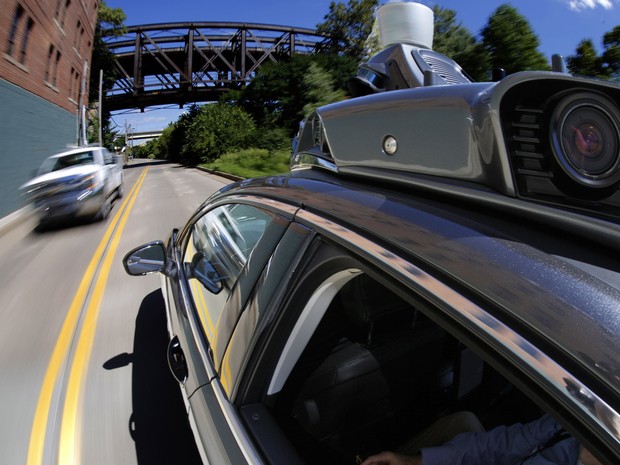
U.S. President Barack Obama penned an op-ed on Monday, Sept. 19, advocating for self-driving cars. He also announced that the U.S. government will require new rules for testing, with the objective of guaranteeing safety until the moment that this new technology is ready for release.
“Right now, too many people die on our roads — 35,200 last year alone — with 94 percent of those the result of human error or choice. Automated vehicles have the potential to save tens of thousands of lives each year,” affirmed Obama in his article in the Pittsburgh Post-Gazette.
Obama took stock of the breakthrough technologies that have arisen since he took office over seven years ago. “Things are a little different today than when I first moved into the White House. Back then, my watch told me the time. Today, it reminds me to exercise. In my first year, I couldn’t take pictures with my phone. Last year, I posted on Instagram from Alaska … In the seven-and-a-half years of my presidency, self-driving cars have gone from sci-fi fantasy to an emerging reality with the potential to transform the way we live,” he explained.
Proposed Rules
The op-ed serves to announce new rules for the testing of self-driving cars, rules that were released on Tuesday with a list of 15 expectations. Automakers must agree to abide by the developing policy. In the article, Obama said that the rules will be flexible, as these technologies are advancing. “And make no mistake: If a self-driving car isn’t safe, we have the authority to pull it off the road. We won’t hesitate to protect the American public’s safety,” he stated. “We’re determined to help the private sector get this technology right from the start. Because technology isn’t just about the latest gadget or app — it’s about making people’s lives better,” Obama wrote.
On the Roads
Last week in Pittsburgh, the company Uber began offering rides in self-driving Ford cars. For now, an auxiliary driver and a company engineer ride along in the car to check how the system reacts to traffic.
All the major automobile manufacturers in the world are already investing in new technologies. Ford plans to produce cars without steering wheels and pedals in 2021, the same year BMW plans to release fully self-driving cars.
The companies Delphi and Mobileye have already announced that they will release a line of self-driving cars as early as 2019. The idea is that when this technology is applied in its complete form, the driver would be just an occupant of the car, able to enjoy the commute while doing other things like working or relaxing instead of worrying about the road. The same technology is essential to Volvo’s plans to “zero out” the number of deaths involving their vehicles by 2020.
What More Can be Done?
In addition to developing technologies, there are other significant obstacles to self-driving cars becoming a reality on our streets. It will be necessary to adapt laws and create structure whereby vehicles can communicate with the roads (anticipating intersections, detours, potholes, etc.), among other questions.
Consumers may still ask themselves if a self-driving car is really more reliable than a car with a human driver. The debate has grown after an accident involving a Tesla, a North American brand that specializes in electric cars, that thus far is the only fatal accident in a car with an active semi-autonomous system.

Leave a Reply
You must be logged in to post a comment.